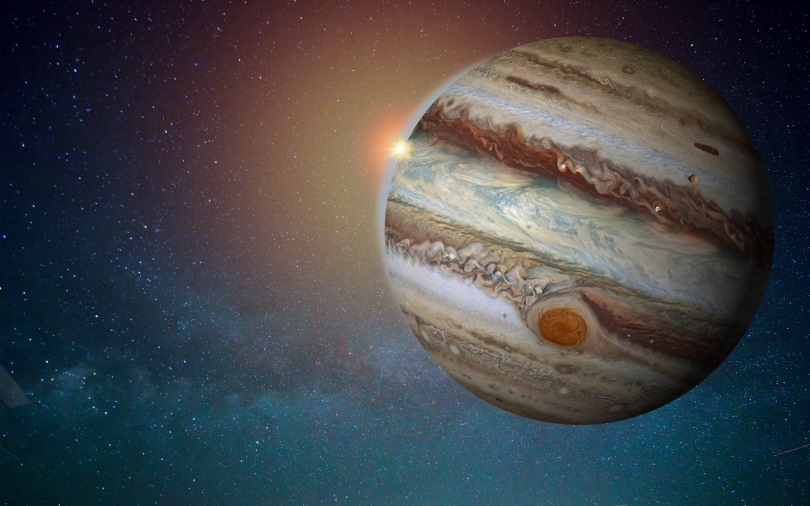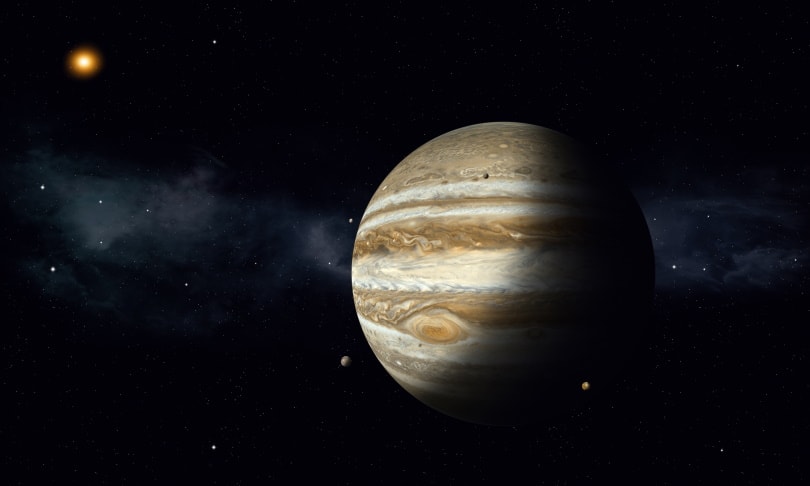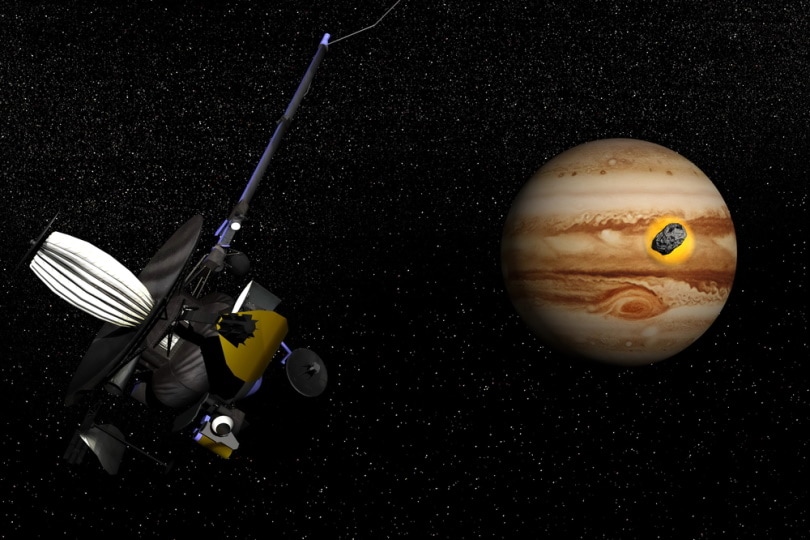When Was Jupiter Discovered? Exploring the History of Jupiter
Last Updated on

Jupiter is the largest planet in our solar system. It is a gaseous planet with more than twice the mass of all the other planets combined and gets its name from the king of ancient Roman gods. Many people want to know when we first learned that it existed. Some may be surprised to learn that while we had suspected that it existed since ancient times, we didn’t actually get proof until a little over 400 years ago, when Galileo made his first detailed observations in 1610. Keep reading as we further explore the history of Jupiter for other interesting facts.

The Discovery of Jupiter
Galileo first saw Jupiter using a small homemade telescope in the year 1610. He used a 20-power telescope that was far inferior to even inexpensive brands that you can find today. He also detected four moons that circled the planet and published his findings in a book titled, “Siderius Nuncius.” These four moons were later called Io, Europa, Ganymede, and Callisto. However, Galileo referred to them by Roman numerals 1 through 4 and suggested names based on medics and astronomers who worked with him. Astronomers didn’t find any other moons until 1892, when E.E. Barnard, an American astronomer, found Amalthea, a fifth moon that is much smaller than the others. Interestingly, this was the last object found with the naked eye; all discoveries after this used digital technology and photography. Currently, scientists have detected 79 objects orbiting Jupiter.

Jupiter Discoveries in the 1900s
The discoveries didn’t stop once Galileo found Jupiter. Scientists have been able to find another 75 satellites orbiting the planet using modern technology not available in the 1600s. In 1973, an American space probe named Pioneer 10 made it past the asteroid belt and was the first to fly by Jupiter, giving us valuable information about the planet’s makeup. In ‘79, Voyager 1 and 2 detected faint rings around Jupiter and discovered volcanoes on the moon Io. In 1992, scientists made use of Jupiter’s immense gravitational field to change the path of the probe Ulysses so it could orbit over the north and south poles of the sun.
Jupiter Discoveries Since 2000
It doesn’t look like the research on Jupiter will stop anytime soon, and there have been many discoveries over the last 25 years. From 1995 to 2003, the Galileo spacecraft worked to learn more about the moons and rings of Jupiter in greater detail, and it also released a probe into the cloud atmosphere. In 2000, the Cassini probe was able to get within 6.2 million miles of the giant planet to take highly detailed images. In 2007, we received more images from the New Horizons spacecraft, which showed us the volcanoes on Io and the frozen moon Europa, among other things. On July 20, 2009, a comment or asteroid crashed into Jupiter’s southern hemisphere, and in 2011, the Juno probe was launched to study the planet’s atmosphere interior structure and magnetosphere, and it arrived in 2016.

What Have We Learned About Jupiter?
Jupiter is an extremely large gaseous planet. It’s a turbulent planet with storms larger than the planet Earth, some of which have been there for hundreds of years, including the large red spot, which has been quite active over the last several years. The storms can rage for extended periods because there is no hard surface to slow them down. The planet’s composition is not that different from the sun, as it contains mainly hydrogen and helium. The pressure becomes so immense inside the atmosphere that it presses the hydrogen into a liquid form, creating a huge hydrogen ocean. Scientists aren’t sure if it has a solid core, but they believe that temperatures there can reach 90,000 degrees Fahrenheit. Jupiter likely has three cloud layers that create its amazing appearance. The top layer is likely ammonia ice, while the middle layer is probably primarily ammonium hydrosulfide crystals, with an inner layer of water ice. You can also see many distinctive belts that wrap around the planet. These belts are created by high-speed winds moving in opposite directions, and the Juno probe learned that these belts could be up to 2,000 miles deep. The magnetosphere is 16 to 54 times as powerful as Earth’s, creating some of the solar system’s most stunning auroras.

What Have We Learned About Jupiter’s Moons?
While many of Jupiter’s moons are extremely interesting, especially those found by Galileo, the frozen moon of Europa gets the most attention because it is one of the best places to find alien life. The frozen surface likely covers a large liquid ocean that may contain microorganisms. While penetrating the surface can be extremely difficult, some scientists have noticed that the cracks appear to be similar to those found on Earth, which may provide a way to reach the liquid interior to find the evidence that we need.

Conclusion
Jupiter was suspected to exist in ancient times, but it wasn’t until Galileo used a 20-power telescope to find it in 1610 that we had proof. Since then, we have studied it in great detail and have sent many probes to collect as much information about it as possible, and we have increased our knowledge beyond imagination. We have many great images to look at, and with all the many ongoing projects, we will likely learn much more in the coming years about both the planet and its moons.
Featured Image Credit: ParallelVision, Pixabay
About the Author Ed Malaker
Ed Malaker is a veteran writer who contributes to a wide range of blogs covering information on computer programming, pets, birding, tools, fitness, guitars, and optics. Outside of writing, Ed is often found working in the garden or performing DIY projects in the house. Ed is also a musician, spending his time composing music for independent films or helping people repair their guitars.
Related Articles:
When Were Binoculars Invented? History, Today & Future
How to Clean a Refractor Telescope: Step-by-Step Guide
How to Clean a Telescope Eyepiece: Step-by-Step Guide
How to Clean a Rifle Scope: 8 Expert Tips
Monocular vs Telescope: Differences Explained (With Pictures)
What Is a Monocular Used For? 8 Common Functions
How to Clean a Telescope Mirror: 8 Expert Tips
Brightfield vs Phase Contrast Microscopy: The Differences Explained
